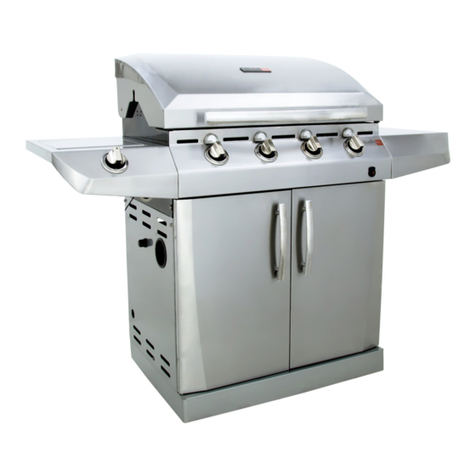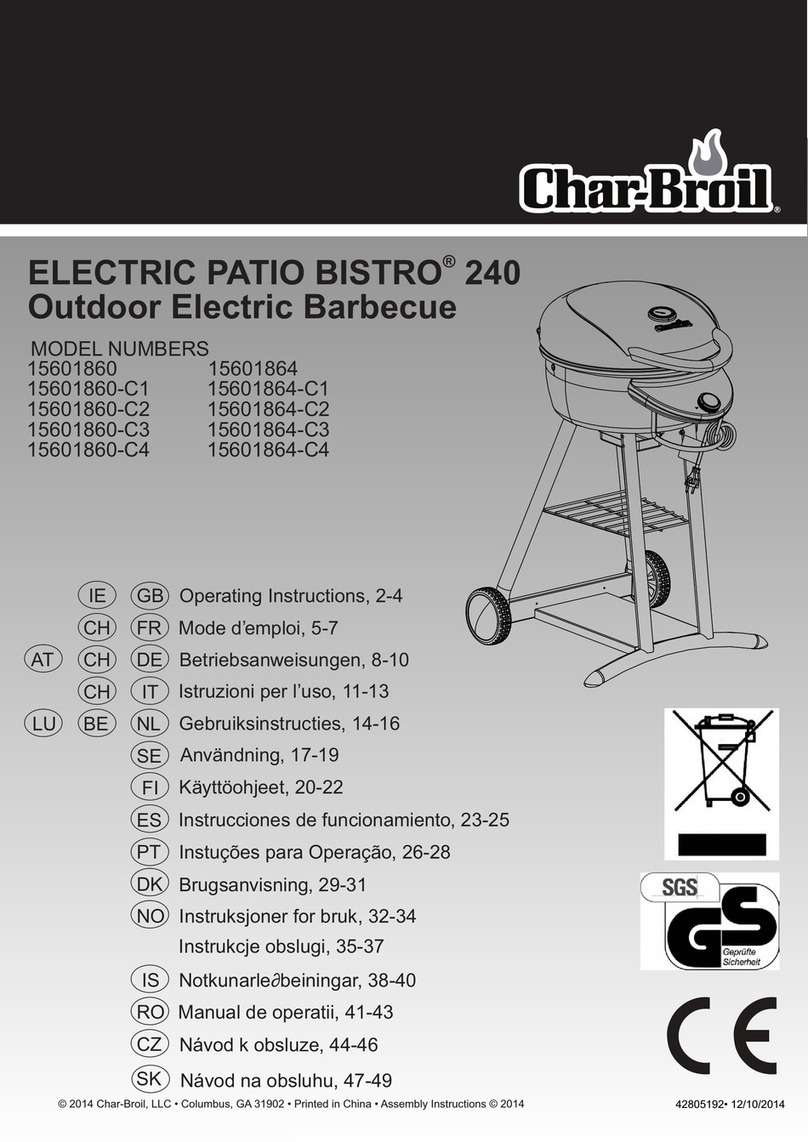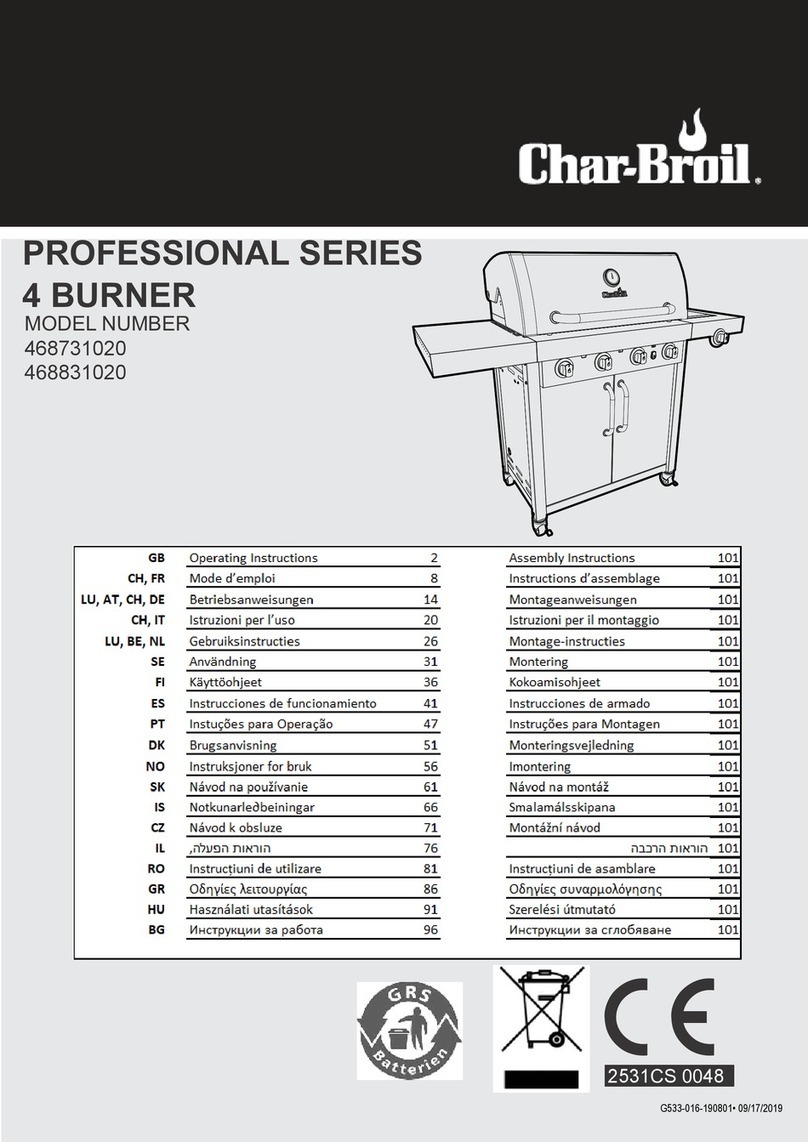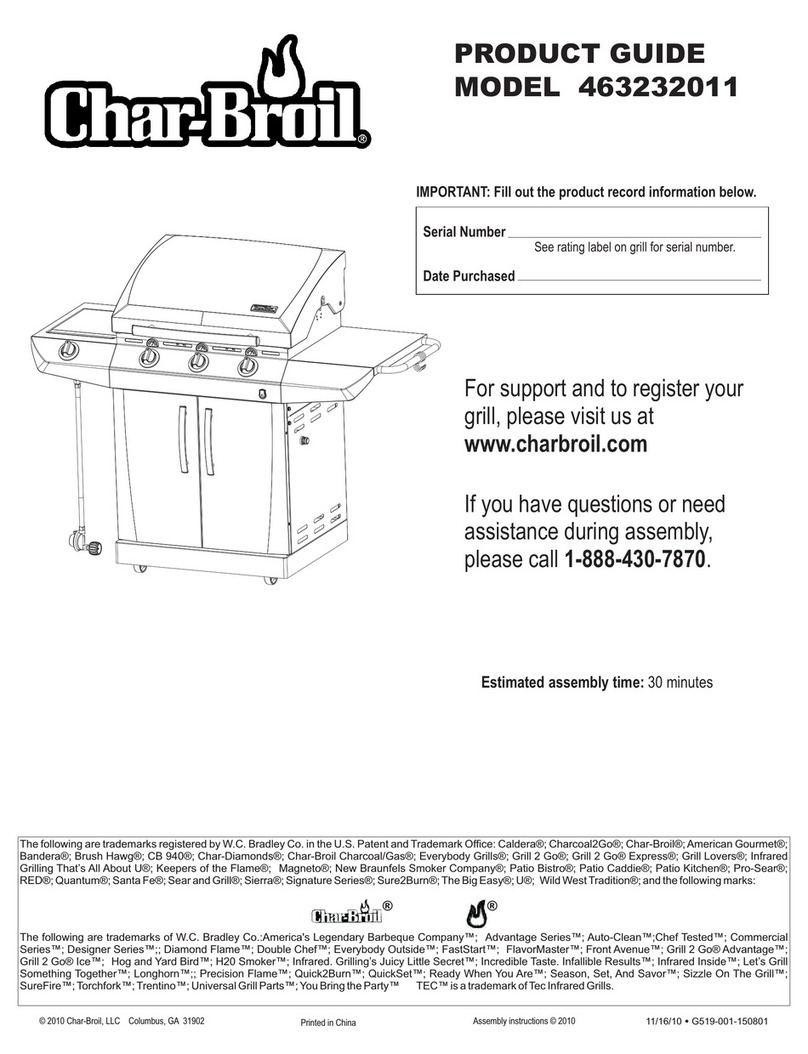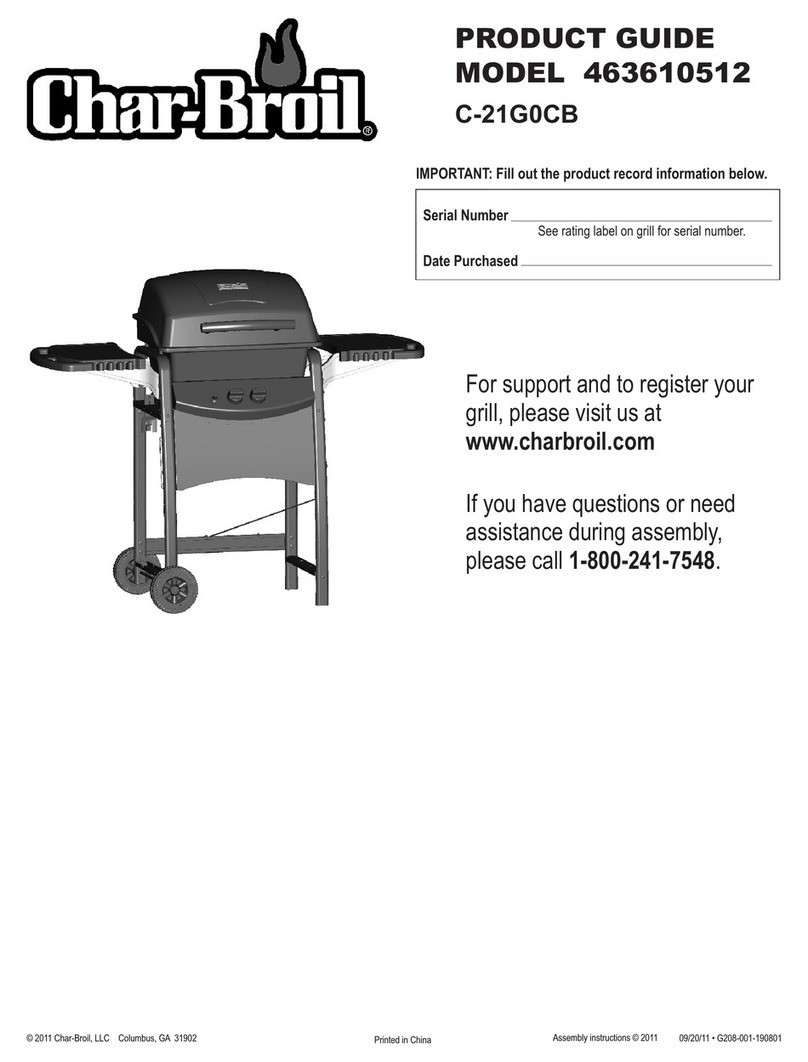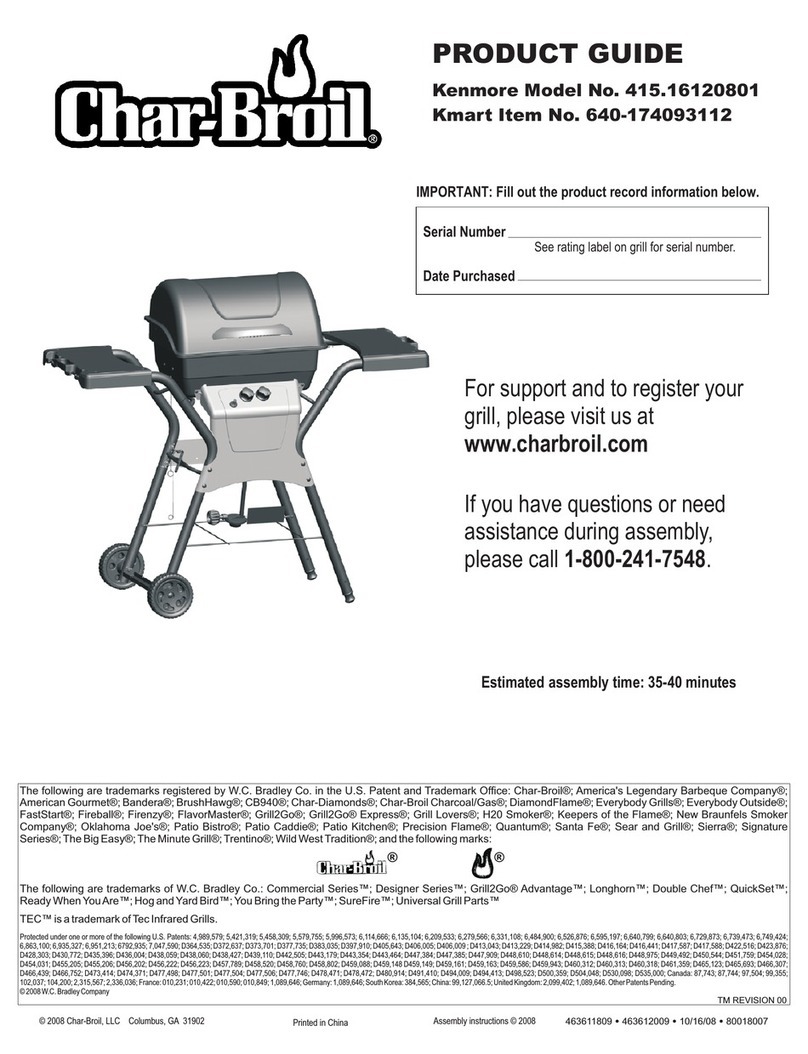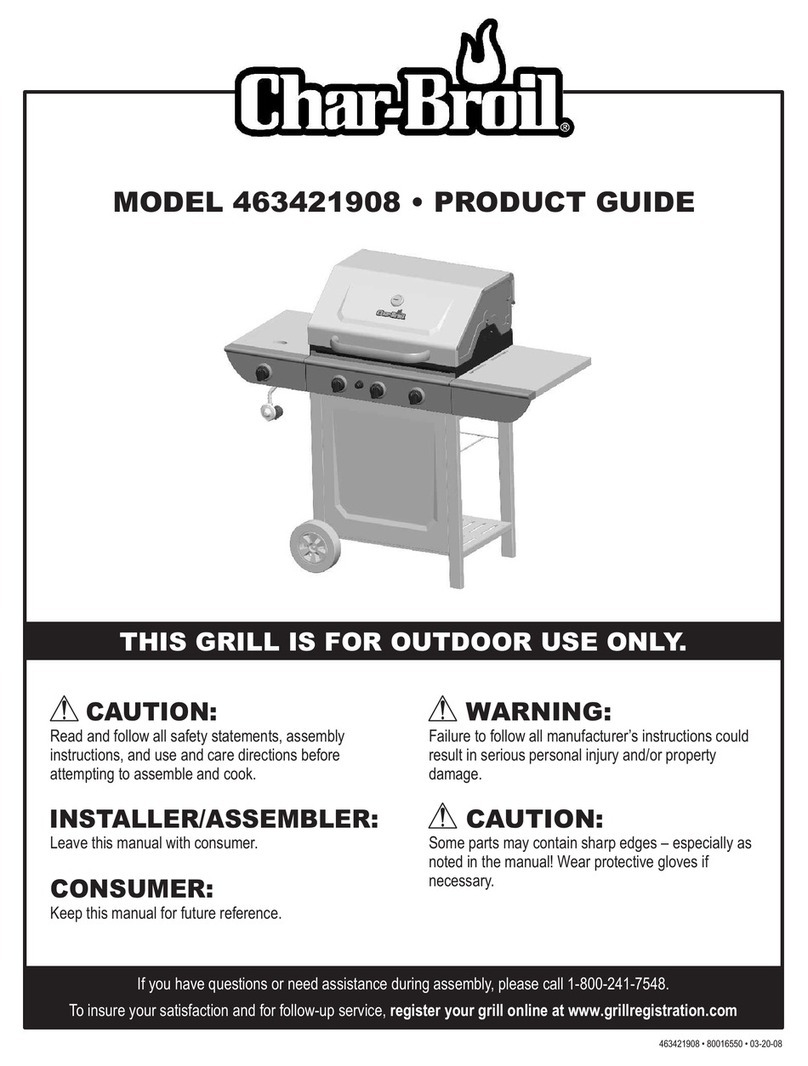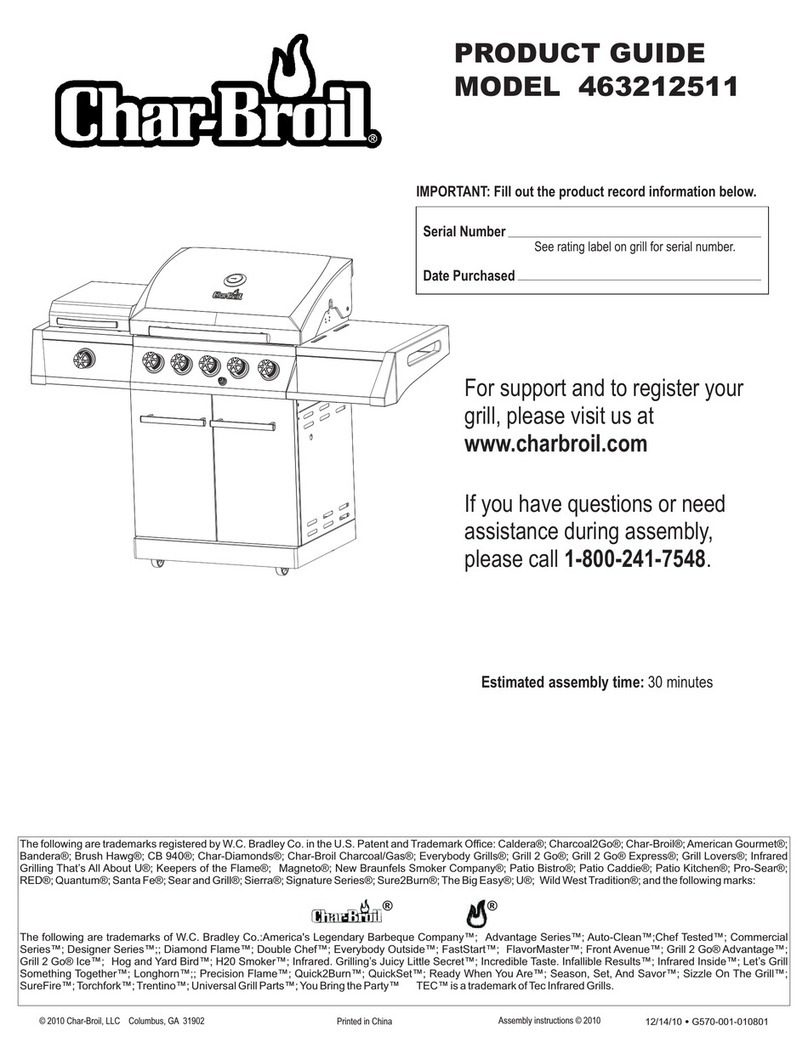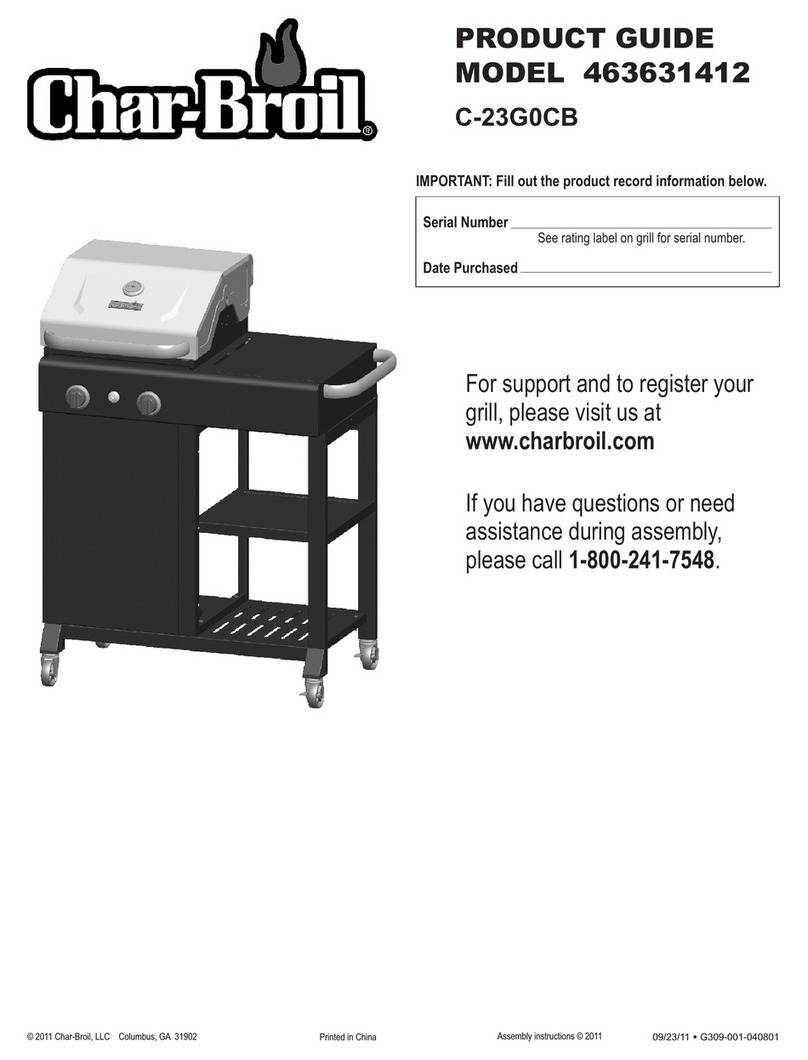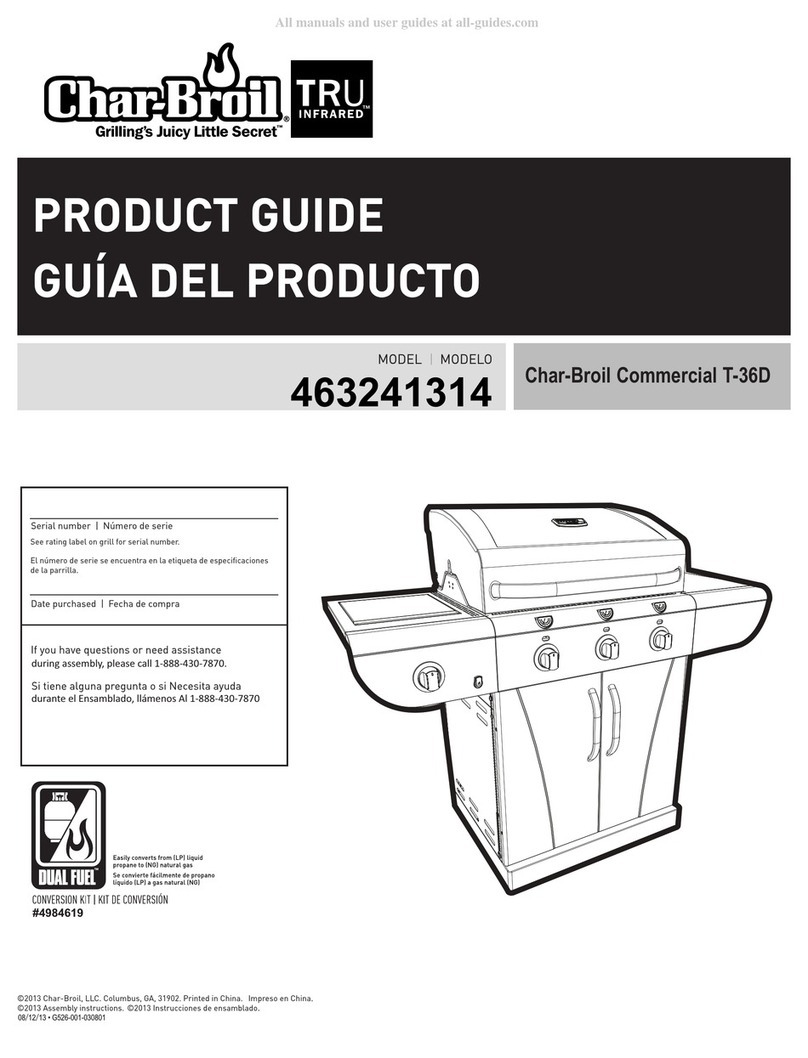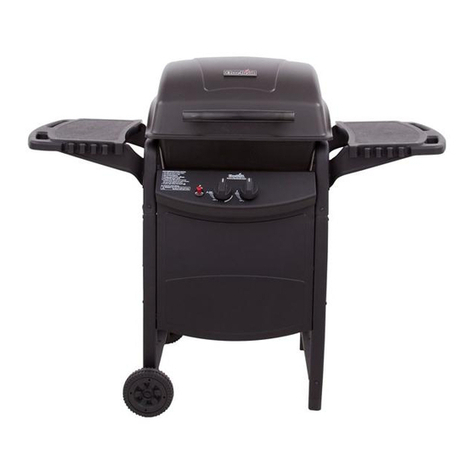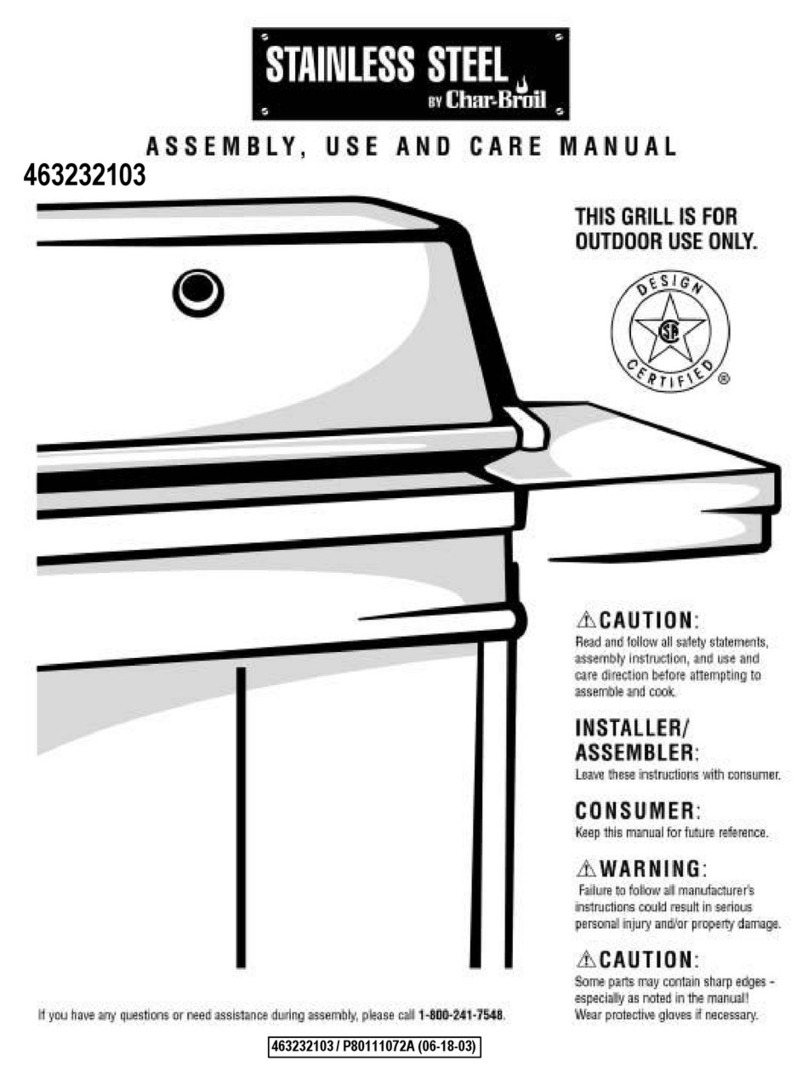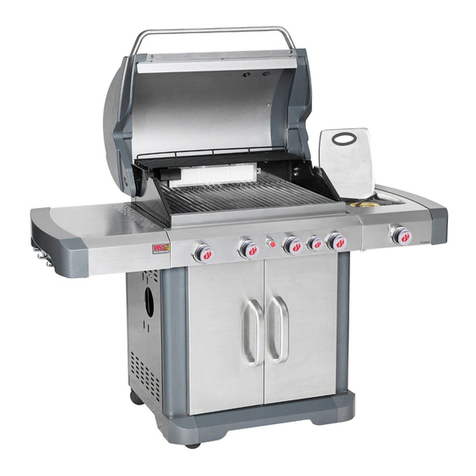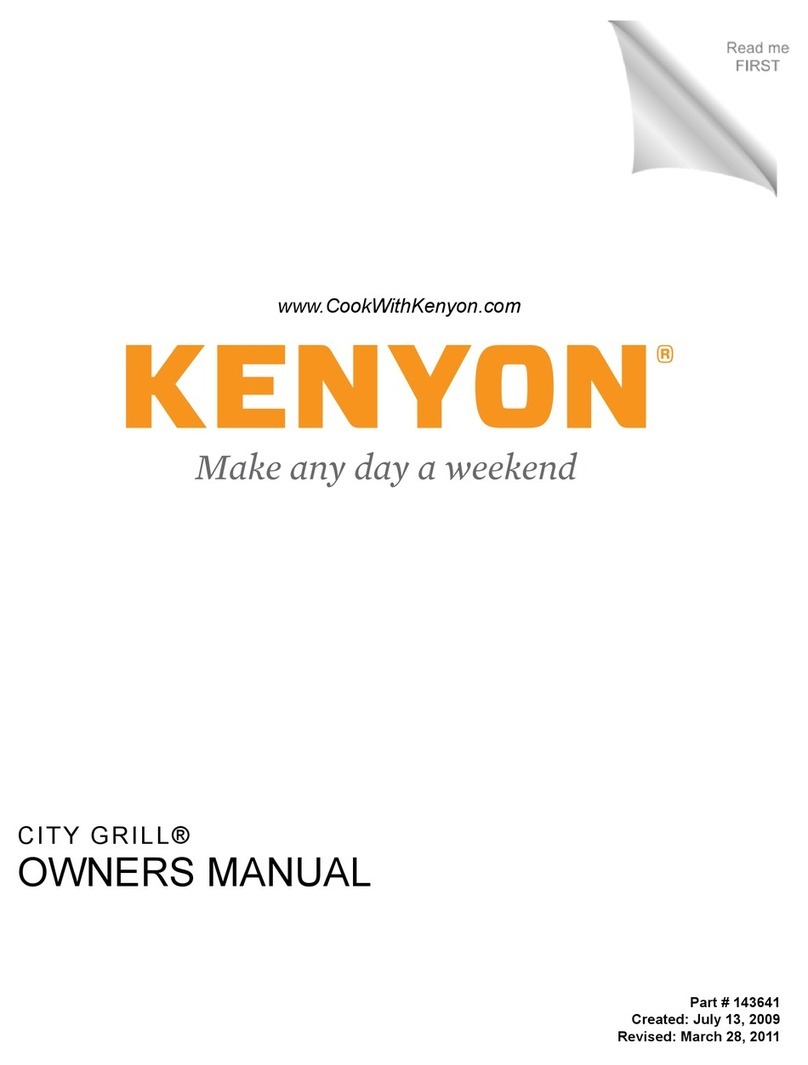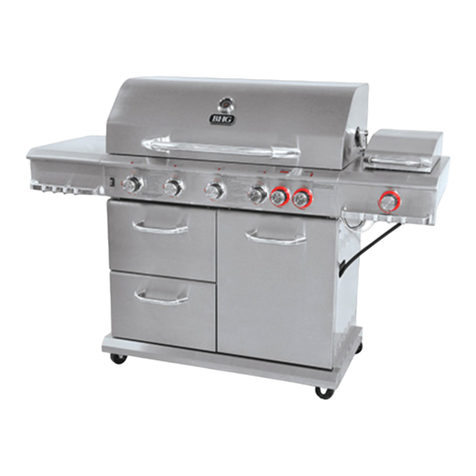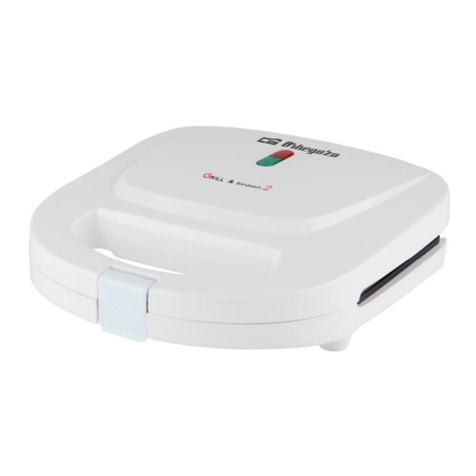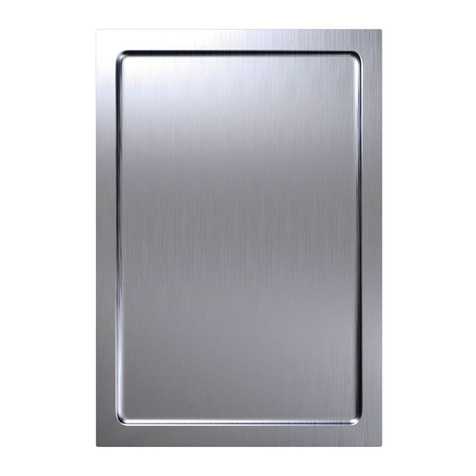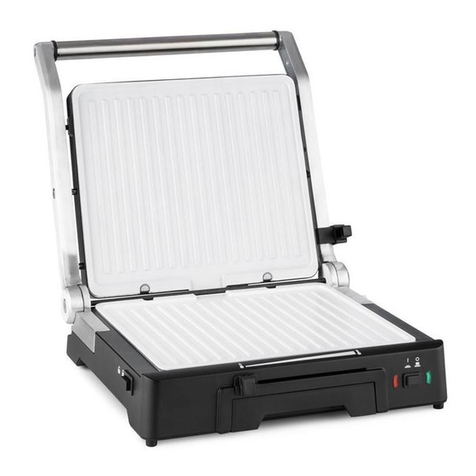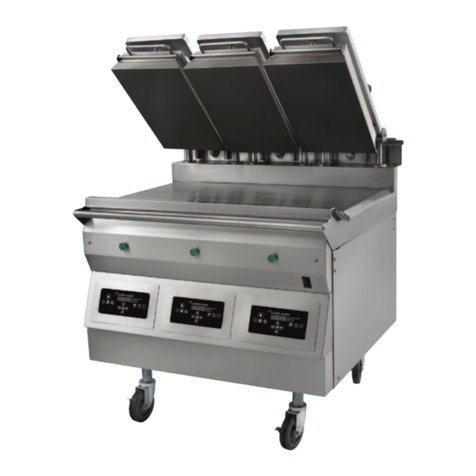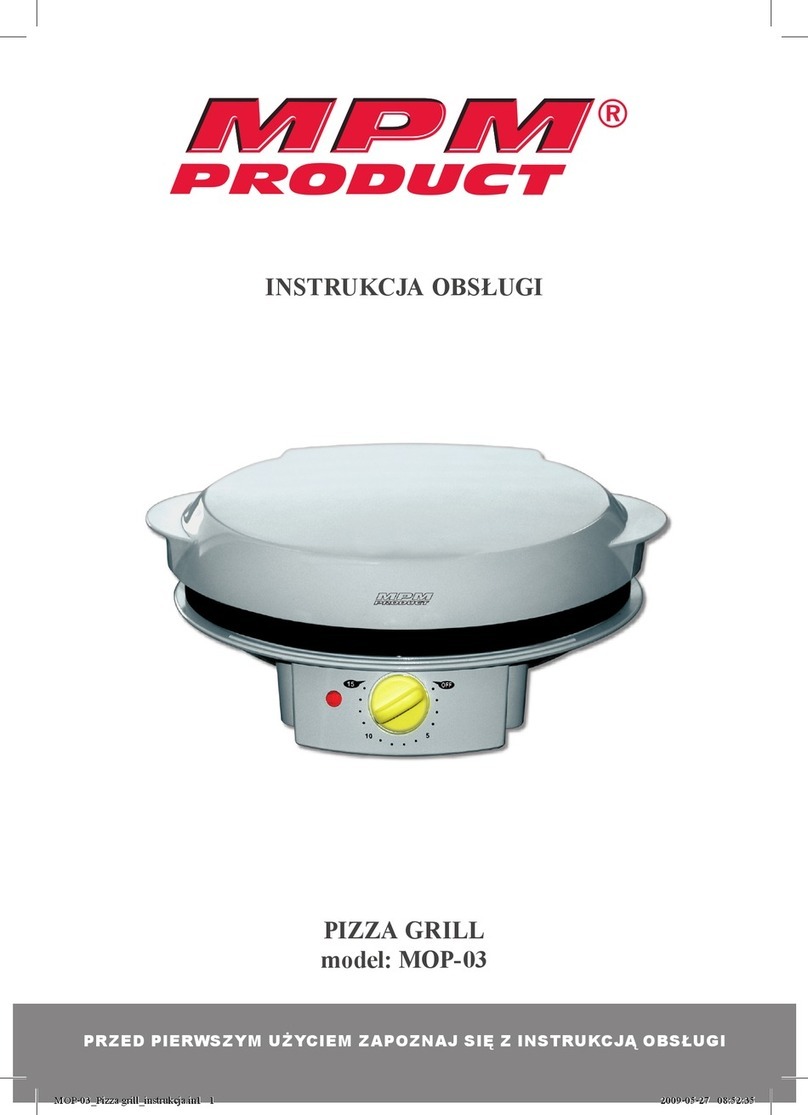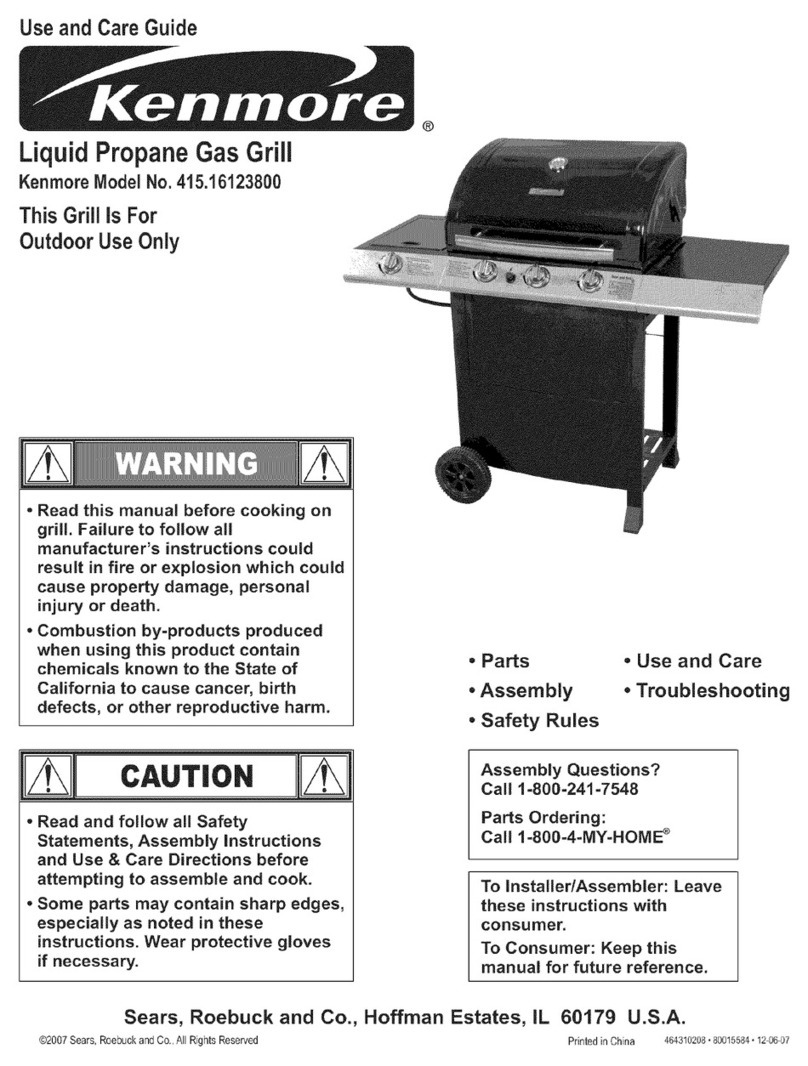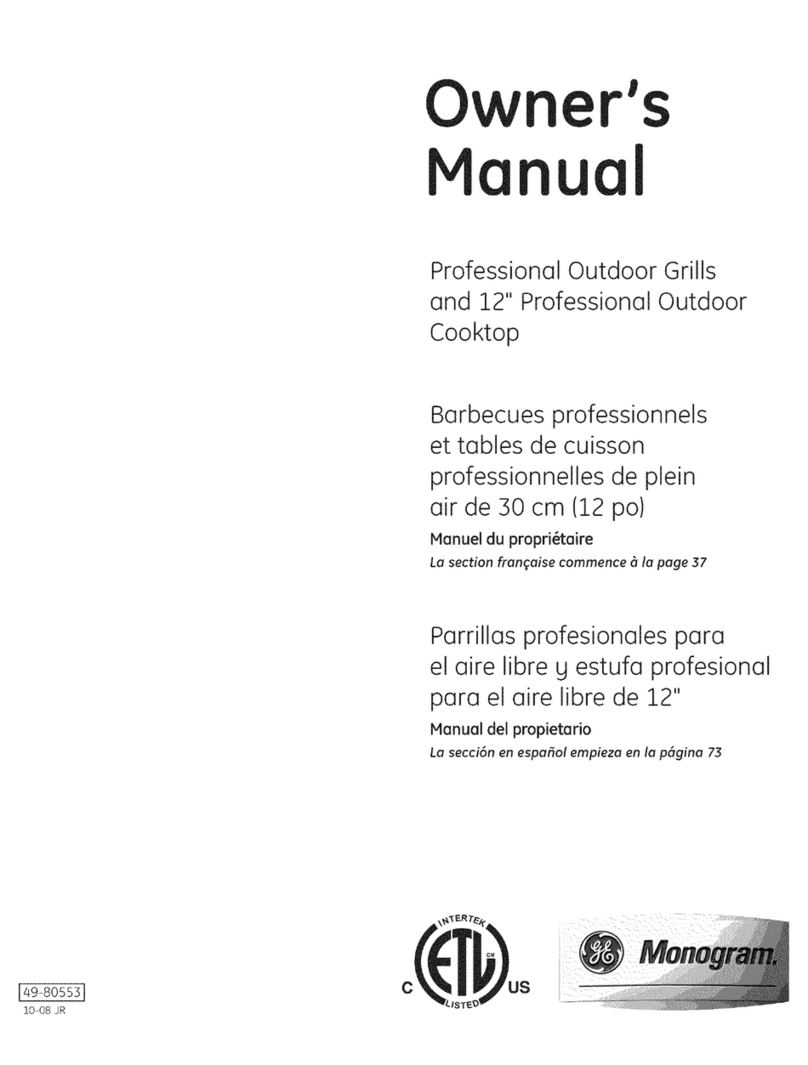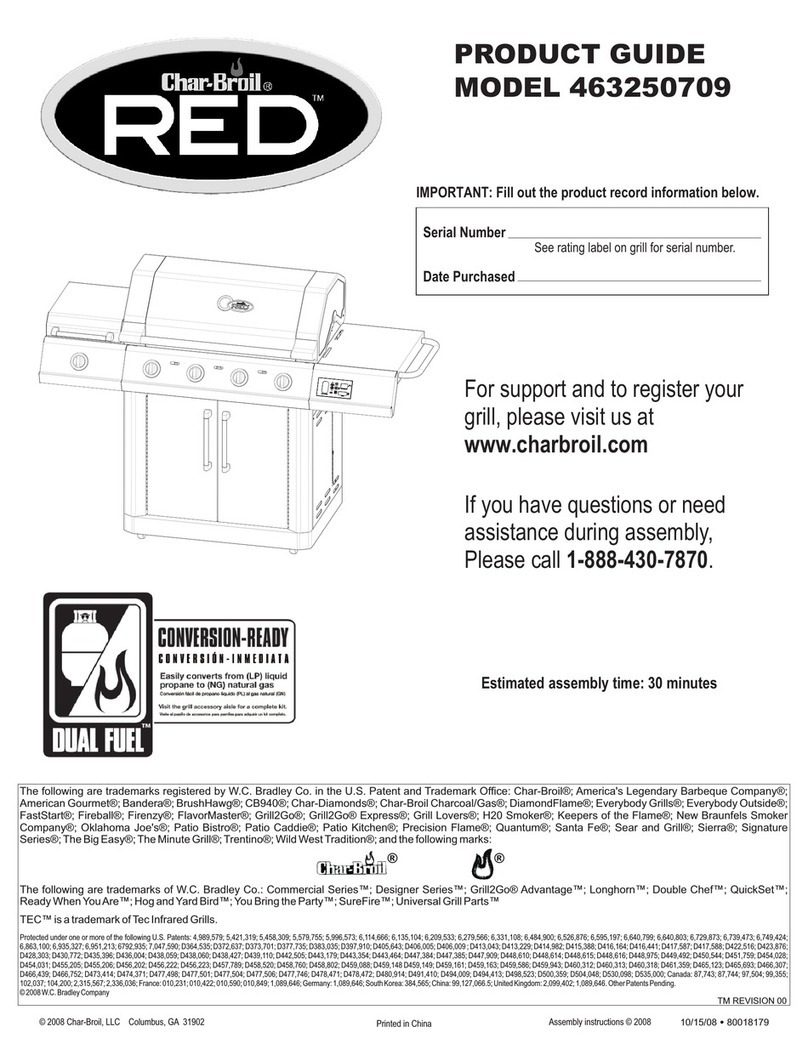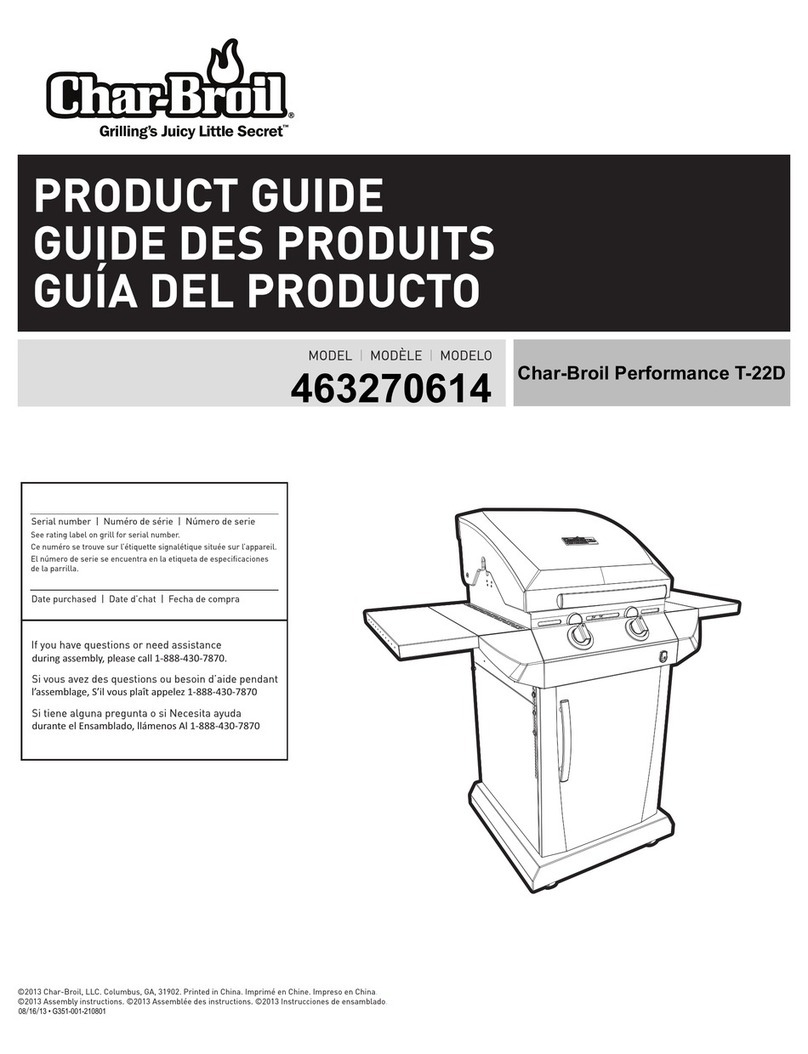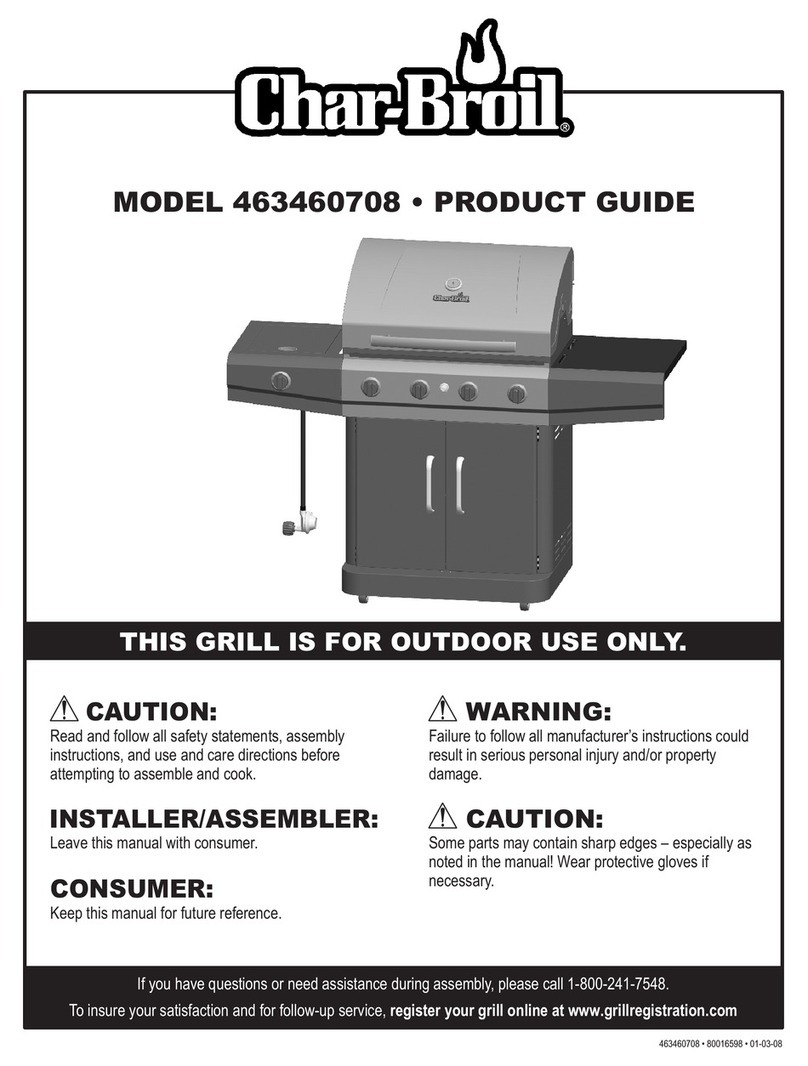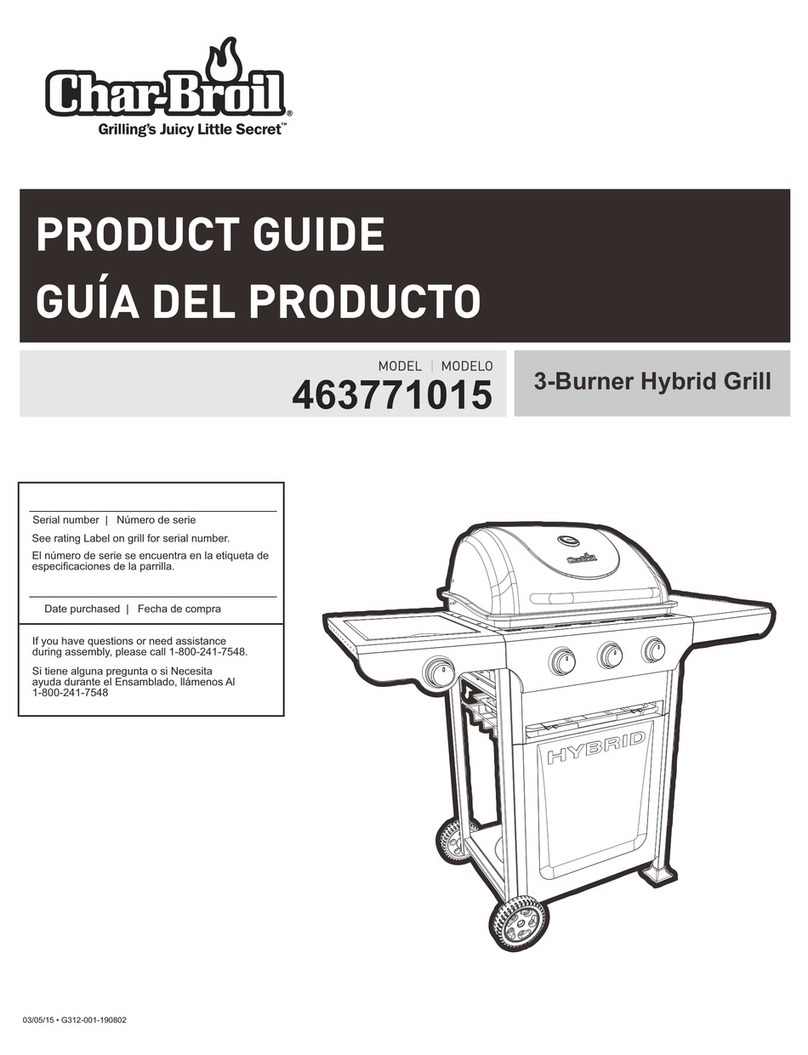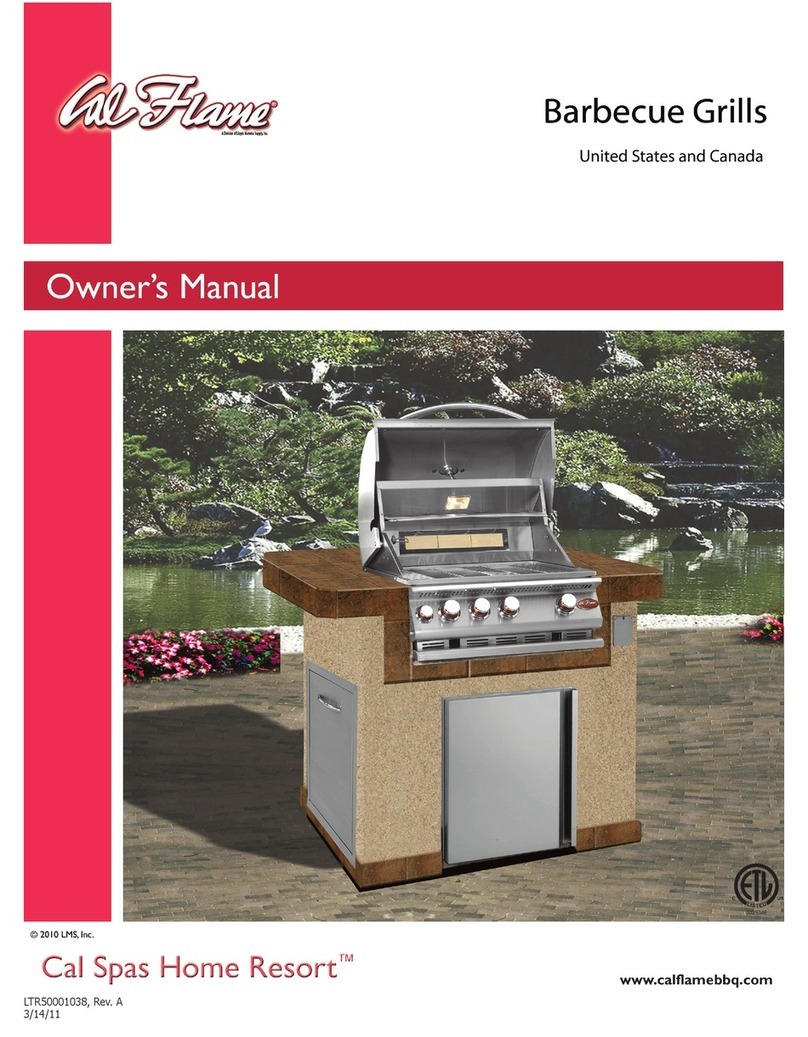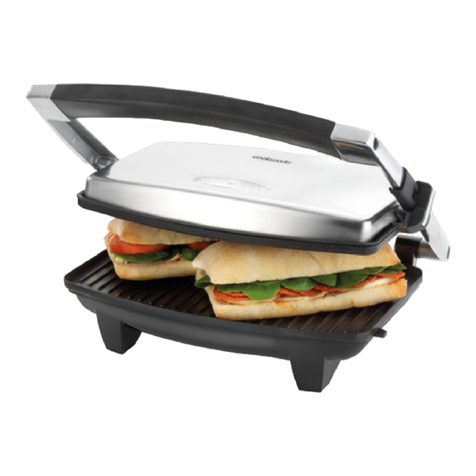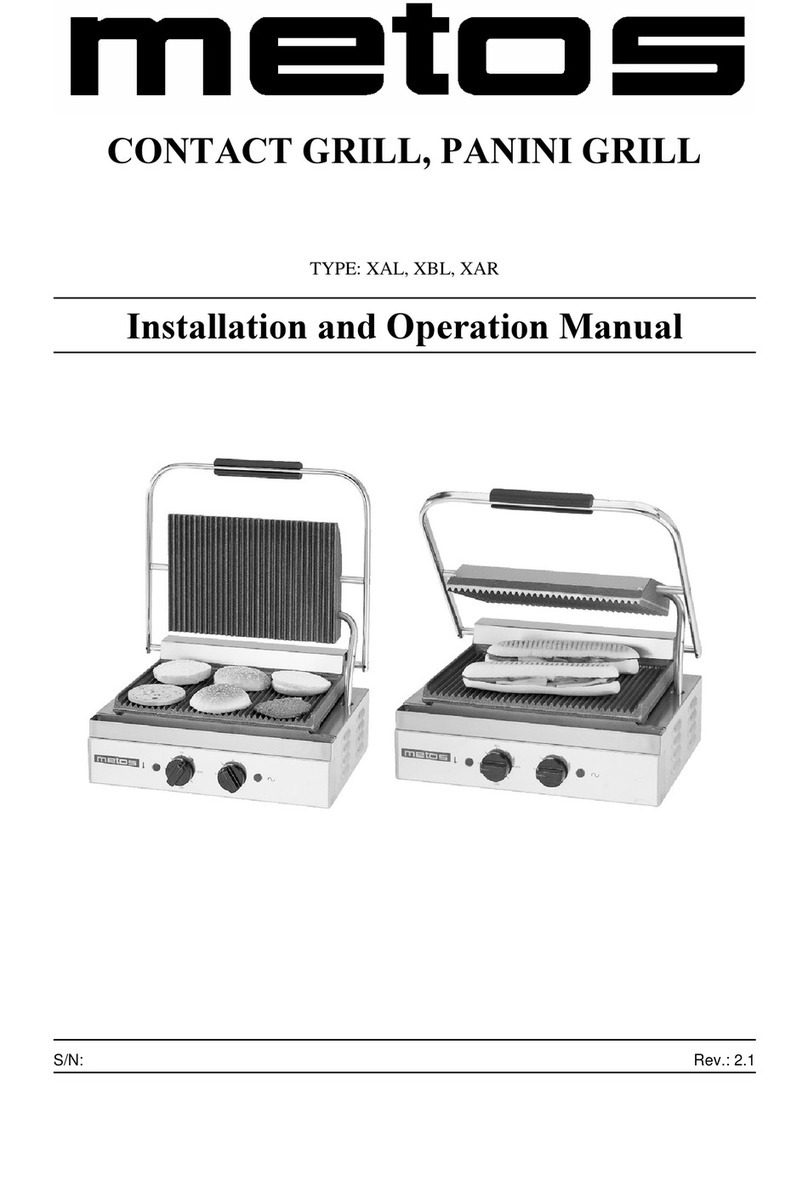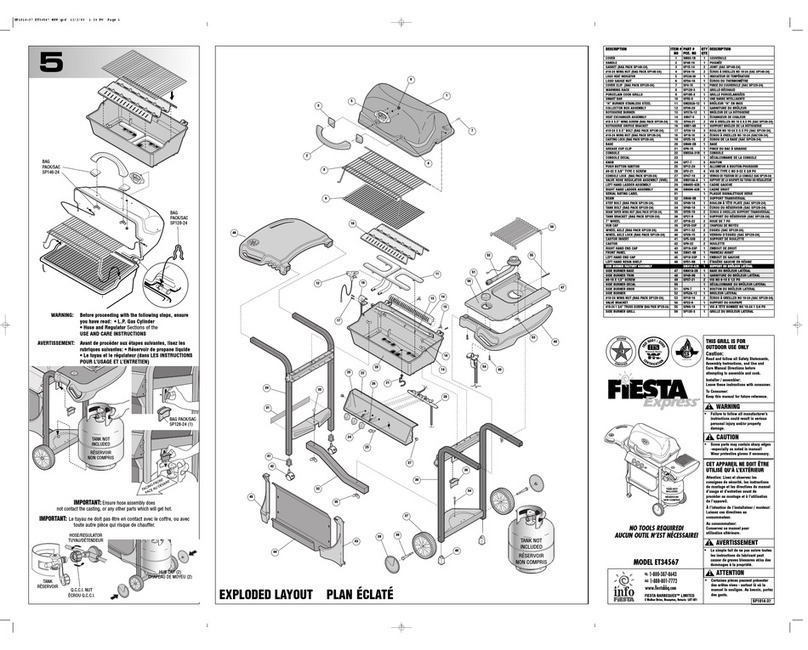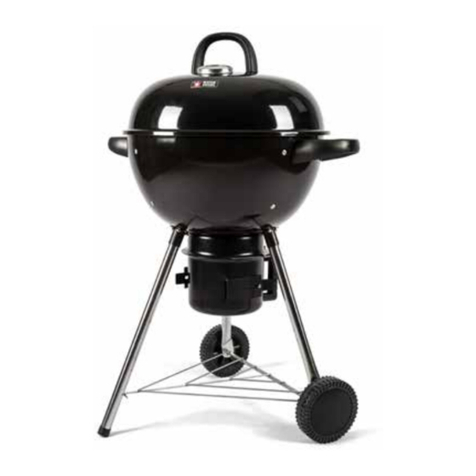
Grilling:
• For best results, cook with lid on the grill to hold in heat and
provide complete cooking.
• Temperature gauge on the lid indicates approximate cooking
temperature inside the grill.
• During initial cooking phase it is common for the gauge to
show the temperature falling below original preheat value. As
time continues temperature will rise somewhat, indicating food
is being properly heated and cooked.
• Controller setting for various foods are dependant upon
conditions and personal cooking preferences.
Turn grill off:
• Turn controller knob fully counterclockwise to OFF position.
• Unplug cord from outlet.
• Remove controller from grill and store indoors.
Cleaning electrical controller and heating
element bracket:
• Clean controller case by wiping with a damp cloth using a mild
detergent or hot soapy water.
• It is not necessary to clean the heating element. However, the
element bracket may be cleaned with a damp cloth using a
mild detergent or hot soapy water.
• Dry electrical controller and heating element before use.
CAUTION
Do not use sharp or pointed tools to clean grill. These type
cleaning tools may tear or puncture the insulation bowl.
Do not use abrasive oven cleaners, steel wool or metal brushes
to clean porcelain grates or grill body. They will damage the
finish.
Replace damaged insulation bowl(s) only with Char-Broil
certified replacement parts. Do not attempt to repair damaged
parts.
DANGER
In case of fire turn controller to OFF, unplug grill from outlet and
allow fire to burn out. Do not use water to put out a fire in this
or another electrical appliance.
To avoid electrical shock disconnect electric cord and remove
electric controller before removing heating element and
cleaning grill. Never immerse electric controller or heating
element in any liquid.
To avoid the possibility of burns be sure grill is cool before
removing and/or cleaning electric controller and heating
element.
Controlling grease fires:
Although some flare-up is desirable as burning juices give meat
that char-broiled flavor; too much flare-up can result in a fire
hazard and overcook meat. To aid in controlling grease fires use
the following precautions:
• Keep grill free from grease; chance of fire is greatly increased
by grease buildup.
• Trim excess fat off meat and use less fatty cuts of meat to
reduce chance of grease fires.
• If flare-up occurs during cooking reduce controller setting and
close lid.
• If flare-up continues turn controller to OFF and unplug the
power cord.
Cleaning your grill:
Excess build up of burned grease and food particles will reduce
the grill’s cooking performance. To obtain optimum performance.
• Clean the lower insulation bowl at least once a season, more
often with heavy use.
Note: The insulation bowl will darken as it becomes seasoned.
Do not attempt to restore a shiny or aluminum appearance
when cleaning.
• Best results are obtained by brushing particle buildup
downward and through drain hole in bottom of grill.
• Using a mild detergent or hot soapy water, moderately scrub
surface of the lower insulation bowl with a plastic or brass
bristle brush.
• Clean porcelain grates regularly with warm soapy water or a
baking soda and water solution. Use non-abrasive scouring
powder for stubborn stains.
• Clean porcelain lid and body with a non-abrasive cleaner. Use
Cream of Tarter for stubborn stains.
Storing your grill:
• Clean cooking grate.
• Remove electric controller from grill. Store controller indoors.
• Store grill in weather protected area or under grill cover when
not in use.
Food safety:
• Food safety is a very important part of enjoying the outdoor
cooking experience. To keep food safe from harmful bacteria,
follow these four basic steps:
Clean: Wash hands, utensils, and surfaces with hot soapy
water before and after handling raw meat and poultry.
Separate: Separate raw meats and poultry from ready-to-eat
foods to avoid cross contamination. Use a clean platter and
utensils when removing cooked foods.
Cook: Cook meat and poultry throughly to kill bacteria. Use
a Thermometer to ensure proper internal food temperatures.
Chill: Refrigerate prepared foods and leftovers promptly.
• For more information call: USDA Meat and Poultry Hotline at
1-800-535-4555. In Washington DC
1-202-720-3333—10:00 am - 4:00 pm Eastern time.
4 • 06601357
